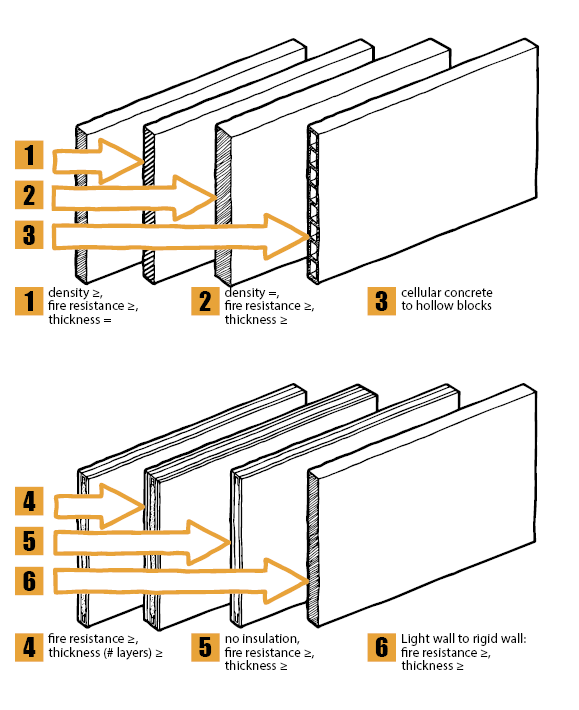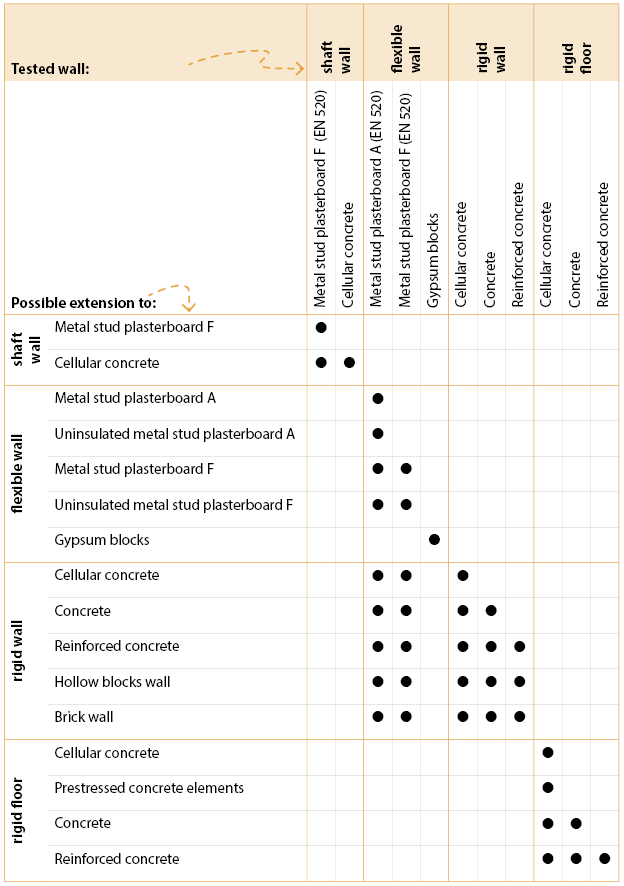Extrapolations

According to the test standard, it is possible to install the fire damper in a wall of the “same type” as the supporting construction used during the test, provided that this wall has an identical or higher fire resistance. The wall must therefore show a greater thickness, higher density, or an additional number of plasterboard layers.
Test results obtained in a concrete structure of cellular concrete can furthermore be applied in hollow-block structures. In this case, the cavities in the hollow blocks around the wall opening should first (before the opening around the fire damper is sealed) be filled with mortar that is suitable for the required fire resistance.
For flexible walls it is also possible to extend the test results to:
- a rigid wall with a thickness and fire resistance greater than or equal to this of the tested wall. The sealing should be the same as the sealing tested with the light wall. For example, the installer may not replace stone wool by mortar or plaster (unless this sealing method has been successfully tested).
- a flexible wall without insulation between the plasterboards, even if the test was carried out with an insulated wall. Here again, the non-insulated wall should have at least the same fire resistance as the tested wall.
Below table features commonly accepted extensions:

 Open to innovation, closed to fire
back
Open to innovation, closed to fire
back
